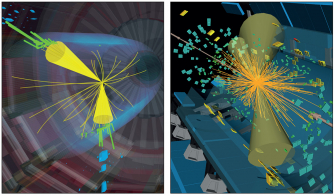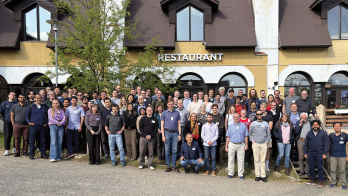The ALICE collaboration has submitted its first paper with results from LHC proton collisions at a centre-of-mass energy of 7 TeV. The results confirm that the charged-particle multiplicity appears to be rising with energy faster than expected.
The results are based on the analysis of a sample of 300,000 proton–proton collisions the ALICE experiment collected during the first runs of the LHC with stable beams at a centre-of-mass energy, √s, of 7 TeV, following the first collisions at this energy on 30 March. The collaboration compares them with data collected earlier at √s=0.9 TeV and √s=2.36 TeV, which they have re-analysed since their earlier publication, with the same normalization as for the new data.
The events used in the analysis have at least one charged particle in the central pseudorapidity region, |η| <1. The selection leaves 47,000, 35,000, and 240,000 events for analysis at 0.9 TeV, 2.36 TeV, and 7 TeV, respectively. At 7 TeV, the collaboration measures a pseudorapidity density of primary charged particles, dNch/dη = 6.01 ± 0.01(stat.)+0.20/0.12(syst.). This corresponds to an increase of 57.6% ± 0.4%(stat.)+3.6/1.8%(syst.) relative to collisions at 0.9 TeV.
This increase is significantly higher than expected from calculations with the commonly used models, so confirming the observations made earlier at 2.36 TeV. In addition, the ALICE collaboration find that the shape of the multiplicity distribution is not reproduced well by the standard simulations. These results have already triggered interest in the cosmic-ray community.
Further reading
ALICE collaboration 2010 arxiv:1004.3514.







